![Congestion in the Greece high-pressure gas pipeline [maps]](https://www.ot.gr/wp-content/uploads/2023/02/gas-tap-with-pipeline-system-at-natural-gas-statio-QKJS6NP-1024x768-1.jpg)
The need to increase the natural gas transmission capacity of the country’s main pipeline is pointed out by the Hellenic Natural Gas Transmission System Operator (DESFA).
In the ten-year development plan for the period 2023-2032 that DESFA put out for public consultation, it is emphasized that the existing high-pressure pipeline system cannot accomodate more gas.
And especially with the planned development of the four new floating LNG storage and gasification units the gas import capacity can be significantly increased further. These are the FSRUs in Alexandroupoli, Volos, Corinth and Thessaloniki.
In essence, the Administrator proposes as a solution the construction of a pipeline parallel to the existing one that starts from Komotini and ends at Patima Korinthos.
Congestion
DESFA describes the problematic points of the National Natural Gas System (NNGS).
“Internal bottlenecks in the Greek NNGS limit the import potential from existing and future entry points”, notes the Administrator and more specifically: “For example, TAP’s import potential in Greece is limited to almost 1.5 bcma, (out of of which 0.5bcma is currently exported to Bulgaria), i.e. less than half of the full import potential from TAP to the Greek NNGS”
And the second problematic point is:
“The small diameter of the Karperi-Komotini pipeline limits to zero the uninterrupted export capacity from the Greek NNGS to IGB, as the available technical capacity has already been assigned and committed by existing consumers.”
A small respite will be given with the ongoing construction of the new compressor station in Komotini which “will allow IGB to receive LNG from the new FSRU in Alexandroupoli, up to IGB’s full capacity (5 bcma), but without expanding the pipeline capacity.” Karperis-Komotinis, this capacity will not be available to any other DESFA User”, describes DESFA.
Investments
According to DESFA, additional investments are required in the Greek natural gas system:
These investments will increase the capacity of the Greek natural gas system to transport quantities of natural gas (mainly LNG) from Greek territory to the northern neighboring countries and Italy and will allow the exploitation of interest in transit flows through Greece, which the natural gas market expresses itself today in several ways.
The Administrator proposes the construction of new projects:
Karperi – Komotini pipeline
The first is the “Doubling of the Karperi-Komotini high-pressure branch” (290 million euros).
This is a project that aims to provide uninterrupted capacity from the Virtual Transaction Point (VTP) to all Exit Points of the specific branch and from all Northeast Entry Points to all Exit Points of the branch.
The proposed project involves the construction of a 30-inch, 215-kilometer, 100% hydrogen-compatible pipeline parallel to the existing network from Karperi to Komotini.
The design of the said project was based on the goal of enabling firm capacity of up to 3bcma in the ESF for export to the IGB, the maximum capacity of which reaches 5bcma, also utilizing the operation of the compression station in Komotini, as well as for additional domestic consumption and supply.
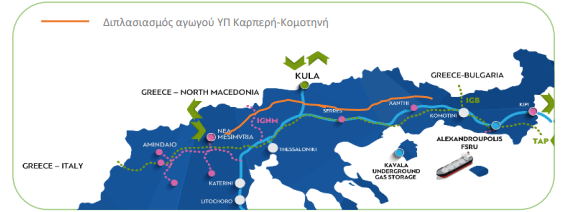
Map of the Karperi – Komotini project
Patima – Livadia pipeline
The second project is the “Doubling of the Patima – Livadia high pressure branch” (€140 million) which is mainly aimed at providing uninterrupted capacity to the users of the Floating Storage and Gasification Unit (FSRU) of the Gas Canal and will therefore be implemented subject to the Final Investment Decision of the Gas Pipeline.
The project includes the doubling of approximately 100 kilometers of the main High Pressure pipeline of the NNGS with a 100% compatible hydrogen pipeline, 30 inches in diameter, from Megara to Livadia, as shown in the map below.
The aim of the project is to reduce the pressure drop in the main pipeline, when the natural gas flow is from South to North, by increasing the pressure level on the upstream side of the Ampelia Compressor.
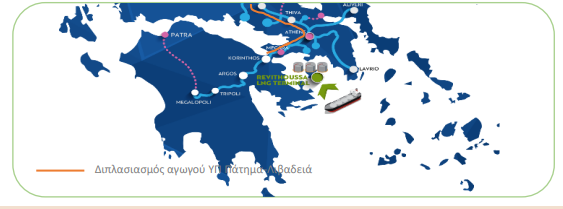
Map of the Patima – Livadia project
Livadia – Karperi pipeline
The third project proposed by the Administrator is the doubling of the Livadia – Karperi high pressure branch with the construction of the necessary compressors at the same time.
The project consists of the following sub-projects:
• Karperi-Liivadia High Pressure Branch (340 km, 30 in. pipeline)
• Upgrading of the planned Compressor in Abelia (adding power up to 12 MW)
• Compressor Upgrade in N. Mesimvria (power addition up to 21 MW)
• New Compressor in the eastern branch (estimated power up to 18MW)
The project can be implemented on a fully scalable, modular and phased basis for further evaluation after the result of the market test, which DESFA will start in February 2023, to evaluate new capacity requests.
And, in this context, this particular project could also act as a facilitator for further requests for capacity commitments at the Interconnection Points between the Greek ESFA and neighboring systems, i.e. TAP, IGB or neighboring countries. For this purpose, the project specifications will be finalized after the completion of the market test, which is expected in early 2024.
The main objective of the project is to eliminate all the bottlenecks of the existing system by providing uninterrupted access to the Greek Natural Gas System, the interconnected networks and the neighboring countries.
The potential maximum increase in the capacity of the NNGS by sector, after the implementation of the project, is presented in the following table. As already mentioned, the pipelines of the project will also be built as 100% hydrogen compatible.
Therefore, this project will serve in the future as part of the expected European hydrogen “backbone”.
The ten-year development plan
In total, the new Draft Development Program 2023-2032 includes projects with a projected budget of 1.27 billion euros, of which the amount of 458 million euros corresponds to new projects, while the rest correspond to those already approved in the PA 2022 – 2031, updated on schedule and budget.
Of these new projects, 13 million euros correspond to improvements, modernization and maintenance of the NNGS, while 430 million euros correspond to new projects that create new capacity in the system.
Latest News
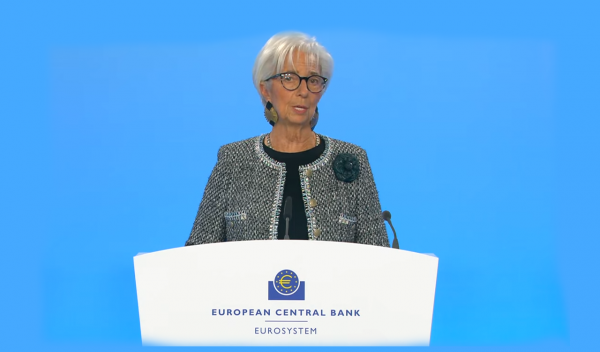
European Central Bank Cuts Interest Rates by 25 Basis Points
It is the fourth cut of interest rates by Europe’s central bank, a move expected by the markets and financial analysts leading to the rate settling at 3%.

Airbnb: New Measures Add €600 in Extra Costs for Property Owners
Property managers face an immediate administrative fine of 5,000 euros if access to the inspected property is denied or any of the specified requirements are not met.

Economist: Greece Included in the Best Performing Economies in 2024
Meanwhile, Northern European countries disappoint, with sluggish performances from the United Kingdom and Germany.

EasyJet Expands Its Routes from Athens
The airline’s two new routes will be to London Luton and Alicante and they will commence in summer 2025.

Capital Link Forum Highlights Greece’s Economic Resurgence; Honors BoG Gov Stournaras
Capital Link Hellenic Leadership Award recipient, Bank of Greece Gov. Yannis Stournaras, an ex-FinMin, was lauded for his pivotal role during Greece’s economic recovery

Tourist Spending in Greece Up by 14%, Visa Card Analysis Shows
Greece’s capital Athens emerged as the most popular destination, recording a 17% increase in transactions with Visa cards, surpassing even the cosmopolitan island of Mykonos.

Inflation in Greece Unchanged at 2.4% in Nov. 2024
The general consumer price index (CPI) posted a 0.4% decrease in November compared to the previous month

2024 Christmas Holidays: Extended Shop Hours Schedule
The 2024 Christmas Holidays extended shop hours schedule commences on Thursday, December 12 and runs until the end of the year.

ELSTAT: Seasonally Adjusted Unemployment Down in October
The number of employed individuals reached 4,284,694, an increase of 67,723 compared to October 2023 (+1.6%) and 22,002 compared to September 2024 (+0.5%).
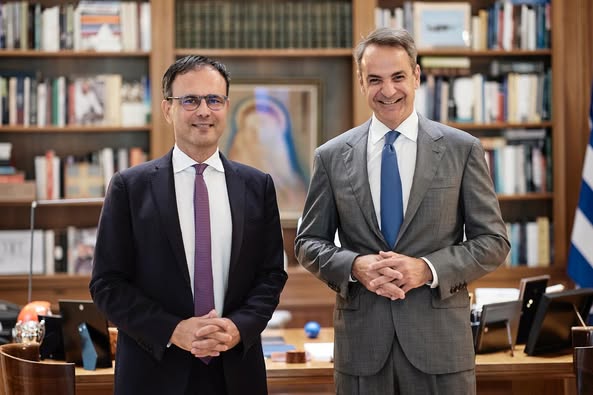
Greek PM’s Chief Economic Adviser Resigns
In the post on his Facebook page, Patelis did not disclose the reasons that led him to step down.













![Fraport: Πάνω από 35 εκατ. επιβάτες στα αεροδρόμια το 11μηνο – Πτώση στη Μύκονο [πίνακας]](https://www.ot.gr/wp-content/uploads/2022/06/fraport-90x90.jpg)


















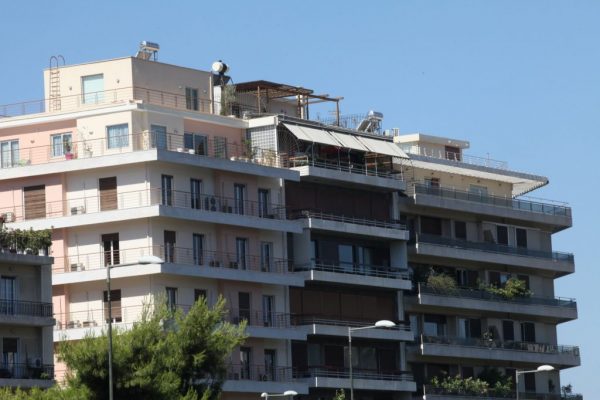
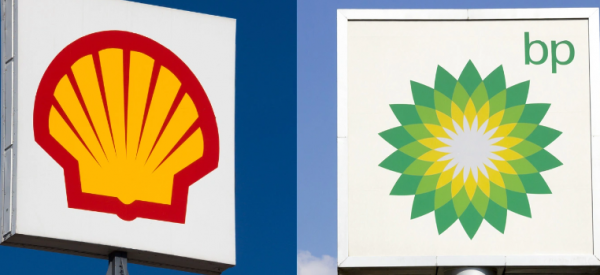




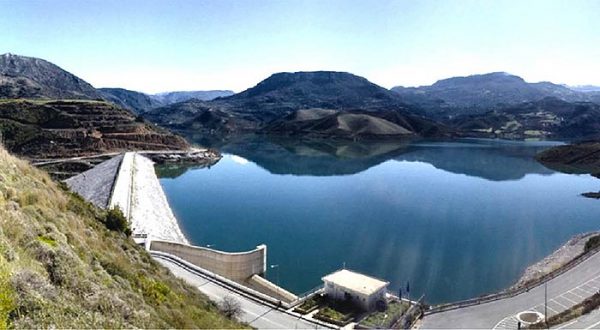
![Fraport: Πάνω από 35 εκατ. επιβάτες στα αεροδρόμια το 11μηνο – Πτώση στη Μύκονο [πίνακας]](https://www.ot.gr/wp-content/uploads/2022/06/fraport-600x375.jpg)


 Αριθμός Πιστοποίησης Μ.Η.Τ.232433
Αριθμός Πιστοποίησης Μ.Η.Τ.232433